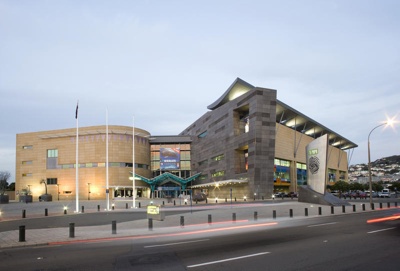Waiwhetu marae, Lower Hutt
Shared by
Museum of New Zealand Te Papa Tongarewa
This essay originally appeared in New Zealand Art at Te Papa (Te Papa Press, 2018). In Waiwhetu marae, Lower Hutt, Ans Westra records the rituals that were part of the opening of the whare whakairo, or carved meeting house, Arohanui ki te Tāngata. But, unlike the woman with the camera in the front row, who is a participant as well as a photographer, Westra is an outsider, an observer. Answering a question about how Māori viewed her activities in the 1960s, Westra said, ‘The Maori would often say they couldn’t visualise that any of their people would work in this kind of isolation because I had to very much stay on the outside and be uninvolved to get my pictures. They said, “We couldn’t visualise a Maori girl doing this because it is too lonely”.’1 The terms of documentary photography were established in the early part of the twentieth century. The photographer was, as Westra suggests, a discreet witness of humanity, the truth of his or her visual record guaranteed by distance and objectivity. Yet the presence of the camera, a stand-in for Westra’s activity, and the way in which the two women (one on the left, the other in the second row) return the camera’s gaze, breaks the illusion that is an integral part of documentary photography — that the protagonists are not aware of being photographed and are therefore not changed by the act. Waiwhetu marae, Lower Hutt is so rich because it suggests the various dynamics and interactions that attend any documentary image but which are often left out of the frame. Westra arrived in New Zealand from the Netherlands in 1957 and quickly became interested in documenting Māori people and culture. As she says, Māori culture ‘seemed to be the most interesting thing here [in New Zealand], and also there was this strong feeling that things were going to change, that here was something historical that needed recording’.2 In part this explains the power of Westra’s photographs, in which the old and new worlds make contact. Customary Māori social practices survive, even as they are transplanted to new environments. Damian Skinner 1 Ans Westra, quoted in Damian Skinner, ‘The eye of an outsider: A conversation with Ans Westra’, Art New Zealand, no. 100, Summer 2001, p. 100. 2 Ibid., p. 99.
Ngā whakamārama
Details
-
Title
Waiwhetu marae, Lower Hutt
-
Maker
Ans Westra
-
Date made
1960
-
Subject
Women, Aged persons, Ethnic groups, Cameras, Wood carvings, Lower Hutt (New Zealand), Māori, Te Āti Awa [attributed], photographic gelatin, photographic paper, silver, black-and-white prints, gelatin silver prints, documentary photographs, works of art, black-and-white photography, documentary photography, Contemporary, Rites & ceremonies, Lower Hutt
-
Rights
All Rights Reserved
-
View source record for this item
Kei hea tēnei taonga?
Where is this item held?
-
Additional information including high resolution images may be available.
-
Location
Cable Street, Wellington
-
Website

Whare taonga | Organisation
Museum of New Zealand Te Papa Tongarewa
Ngā here ki runga i ngā whakaahua o tēnei taonga?
What can you do with images of this item?
-
You must check with Museum of New Zealand Te Papa Tongarewa to confirm terms of use and any attribution requirements, but this is our understanding:
-
Use for private study, research, criticism, review, or education
NZ Copyright law allows for the use of copyrighted works in specific circumstances. Consider what you can do under copyright law.
-
No sharing
You can't share this image without futher permission.
-
No modifying
You can't modify, remix or add to this image without further permission.
-
No commercial use
You can't use this image to make money.
-
Text adapted with permission from Te Papa and Digital NZ
Tāpirihia he kōrero anō
Improve this record
-
Can you help us? Share names, details and stories to help enrich the collection.